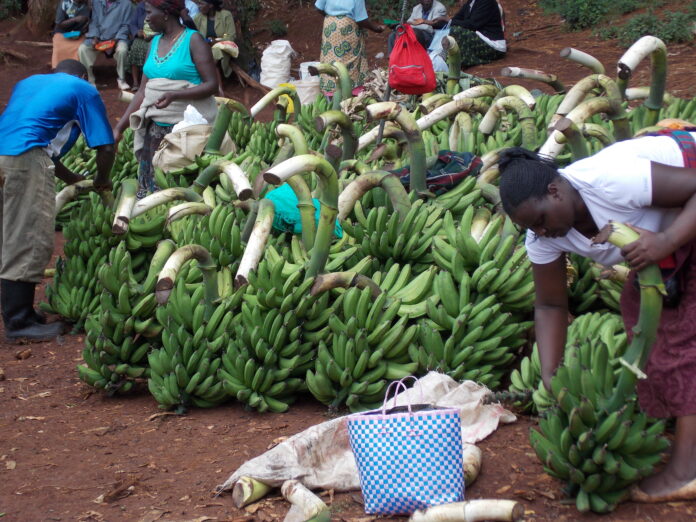Setting tips on how to grow bananas will help a farmer in identifying and realizing a worthwhile agribusiness opportunity. Banana is one of the most popular fruits amongst Kenyan communities. It is also a staple food to others. They are cultivated both in small scale farming and large scale farming.
Locally the market is readily available. In order to meet the increased demand for bananas and venture into agribusiness sector, farmers need to get helpful information and banana farming tips boost yield productivity.
Condition to Grow Bananas
Bananas yield better in the following conditions;
– Annual rainfall ranging from 1000-2500 mm.
– Altitude required is 1800 m above sea level.
– Bananas generally require deep, well-drained soils and are fertile especially with potassium nutrient. Potassium enhances ripening of the fruit.
– For better yield a pH of 5.5-6.5 is recommended.
– Suitable areas with these favorable conditions include Kisii, Kirinyaga, Embu, Meru, Murang’a, Nyeri, Coastal regions among others.
– For adequate growth bananas also require a warm and humid climate, where temperature range from 20-30°C
Farmers also need to practice mulching which in turn favors the growth of banana plant steadily. Mulching may be from banana leaves or household waste.
In order to get satisfactory produce several banana growing instructions must be followed in land preparation. They include;
– Plant at the spacing of 3 by 3m from each plant.
– While planting one should ensure the hole dug is 90cm*90cm*60cm. The topsoil should be kept first followed by the underlying dug soil.
– While planting fertilizer and manure application is necessary. Apply around 200g triple phosphate per planted banana; to accelerate growth one can apply nitrogen to foster fertilization. Also Ammonium Nitrate (CAN) is necessary that is around 300g annually. Decomposed farmyard manure can also be used.
– A banana plant takes around 8-12 months to reach maturity, while a fruit takes roughly 90-150 days to be ready for harvesting, the fruit is light green in color and has shiny appearance.
– Also to ensure that the plant is not affected by diseases one should pluck the drying leaves. Some of the diseases and pest that attack banana plants include; weevil, fungal disease like fusarium wilt and nematodes and bacteria such as xanthomonas wilt.
While harvesting avoid bruising the fruit as it lowers its quality. Store the harvest in a cool dry place. Also ensure careful transport and most preferably when the fruits are green. Bananas can be consumed as a fruit and also used for cooking. In the Kenyan market bananas have economically benefited farmers and business people due to its high demand and high profits. It is creating wealth opportunities for rural farmers and also setting the pace towards a food secure country. This has increasingly improved the livelihood of the people practicing banana farming.








